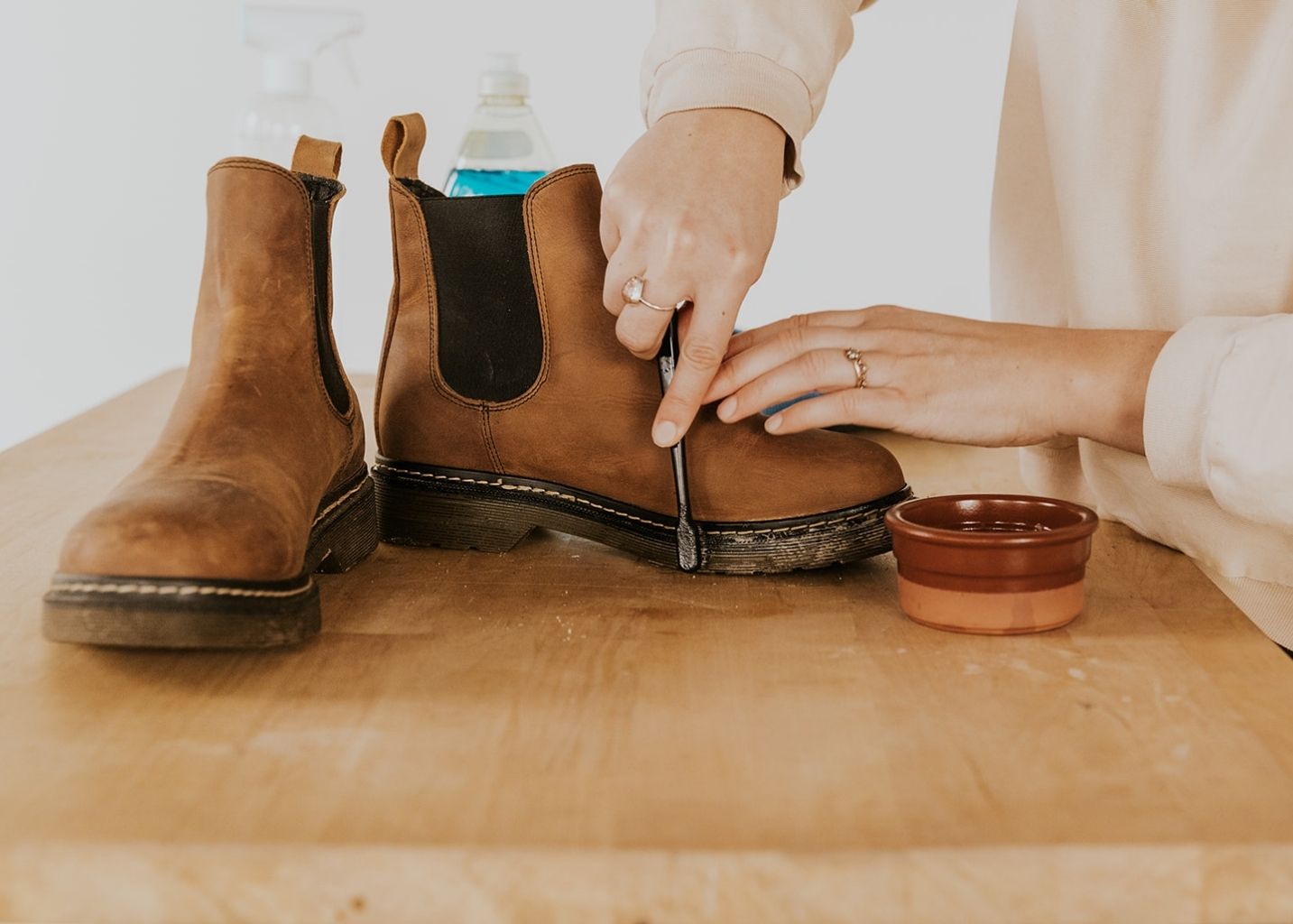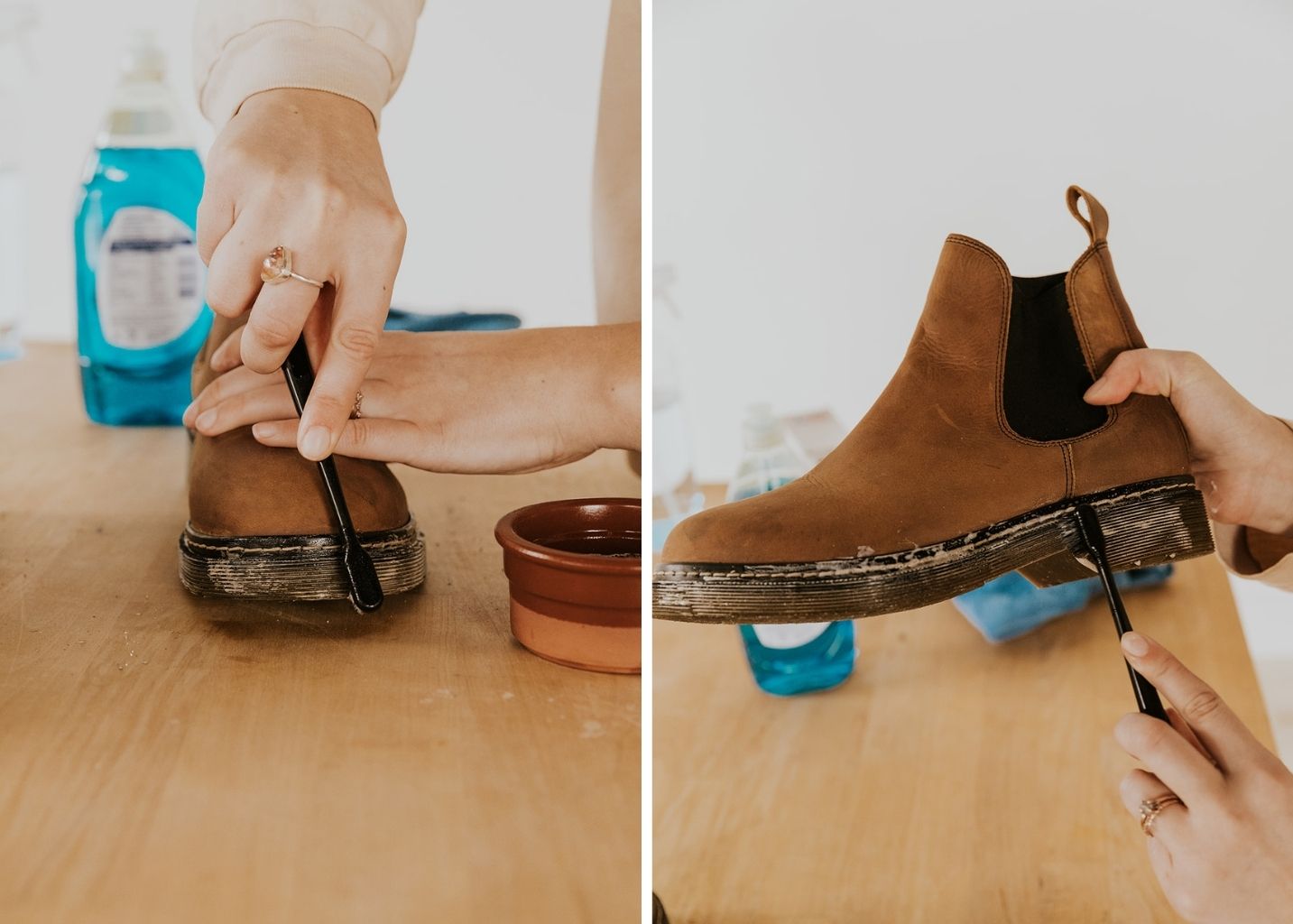Leather shoes are often a staple in our wardrobes, providing both style and comfort. However, maintaining their elegance can sometimes be challenging, especially when it comes to cleaning them. In this article, we will explore how to effectively clean leather shoes without relying on store-bought leather cleaners. Whether you’re a shoe enthusiast, a fashion lover, or simply someone looking to keep their shoes pristine, this guide is for you!
The Beauty of Leather Shoes
Leather shoes are an investment in style and durability. From high-end designer options to practical everyday wear, leather footwear offers a combination of aesthetics and comfort that is hard to beat. However, they require proper care to maintain their appearance and longevity. Many people often rely on specialized leather cleaners, but these can be expensive and unnecessary for cleaning everyday dirt and grime. By using household items, you can easily restore your beloved leather shoes.
Understanding Leather Types
Before diving into cleaning methods, it’s essential to understand the different types of leather. The primary categories include:
Full-Grain Leather
This is the highest quality leather, known for its durability and natural finish. It ages beautifully, developing a unique patina over time.
Top-Grain Leather
Often sanded or refinished to remove imperfections, top-grain leather is slightly less durable than full-grain leather but still of high quality.
Genuine Leather
This is made from the lower layers of the hide and is often treated to have a more uniform appearance. While it’s affordable, it’s not as durable as full-grain or top-grain options.

The Impact of Leather Type on Cleaning
Understanding the type of leather you have will help determine the best cleaning method. Full-grain leather, for instance, requires more gentle care compared to genuine leather, which may be more forgiving during cleaning.
Common Household Items for Cleaning Leather Shoes
Now that you have an understanding of leather types, let’s explore some household items you can use to clean leather shoes:

1. Mild Soap and Water
Mild soap mixed with water is an effective solution for cleaning leather shoes. Dish soap or baby soap works best. Make sure to use warm water, as hot water can damage the leather.
2. White Vinegar
White vinegar is a natural disinfectant and can help remove stains and odors. Mix equal parts of water and vinegar for a cleaning solution.

3. Olive Oil and Vinegar
This combination is excellent for conditioning the leather while cleaning. Mix two parts olive oil with one part vinegar for a soothing solution.
4. Cornstarch
For oil stains, cornstarch works wonders. Apply it to the stain, let it sit overnight, and brush it off in the morning.

5. Baking Soda
Baking soda can help eliminate odors and stains. Make a paste of baking soda and water, apply it directly to the affected areas, and wipe clean.
Case Study: Cleaning with Household Items
In a real-world example, Jane, a working professional, struggled to keep her black leather loafers clean. After a particularly muddy day at work, she turned to her pantry. Using a mixture of mild soap and warm water, she was amazed at how well the dirt came off. She followed up with a solution of olive oil and vinegar, leaving her shoes conditioned and shining like new!

Step-by-Step Guide to Cleaning Leather Shoes
To clean your leather shoes without a leather cleaner, follow these steps:
Step 1: Gather Your Supplies
Before you begin, gather your cleaning supplies. You will need:
- Soft cloth or sponge
- Bowls for mixing
- Water
- Mild soap (dish soap or baby soap)
- White vinegar
- Olive oil
- Baking soda (if needed)
- Cornstarch (if needed)

Step 2: Remove Laces and Debris
Start by removing the laces from your shoes. This allows you to clean the tongue and eyelets more effectively. Next, use a soft brush or cloth to remove any loose dirt or debris from the shoe’s surface.
Step 3: Prepare the Cleaning Solution
Mix a small amount of mild soap with warm water in a bowl. For a vinegar solution, mix equal parts of water and white vinegar.

Step 4: Wipe Down the Shoes
Dip a soft cloth or sponge into your chosen cleaning solution. Wring it out thoroughly to avoid soaking the leather. Gently wipe down the surface of the shoes, focusing on stained or dirty areas.
Step 5: Rinse and Dry
Follow up by rinsing your cloth or sponge with clean water and wiping away any soap residue. Then, dry your shoes with a separate, clean, dry cloth.
Step 6: Condition the Leather
After cleaning, it’s essential to condition the leather. Use the olive oil and vinegar mixture mentioned earlier. Apply a small amount to a clean cloth and rub it into the leather in circular motions.
Step 7: Let Them Dry
Finally, allow your leather shoes to air dry away from direct sunlight or heat sources, as these can cause cracking.
Pro Tips for Maintaining Leather Shoes
Keeping your leather shoes in top condition goes beyond just cleaning them. Here are some expert tips to maintain their beauty:
1. Regular Cleaning
Set a routine for cleaning your shoes every few weeks to prevent dirt buildup. A quick wipe down can make a significant difference.
2. Use Shoe Trees
Invest in shoe trees to help maintain the shape of your shoes and absorb moisture. This is crucial for preventing creasing and extending the lifespan of your footwear.
3. Protect with Wax or Cream
A layer of cream or wax can protect your leather shoes from moisture and stains. Apply this after cleaning and conditioning.
4. Avoid Water
When possible, avoid wearing leather shoes in wet conditions. If they do get wet, dry them slowly away from heat.
5. Store Properly
Keep your shoes in a cool, dry place, preferably in their original boxes or dust bags to prevent dust accumulation.
Comparison Table of Cleaning Methods
| Method | Effectiveness | Ingredients Required | Pros | Cons |
|---|---|---|---|---|
| Mild Soap & Water | High | Mild soap, water | Gentle on leather, easy to use | Requires rinsing |
| Vinegar Solution | Medium | White vinegar, water | Disinfects, removes odors | Can be drying if overused |
| Olive Oil & Vinegar | High | Olive oil, vinegar | Conditions leather, easy to make | Can be slippery if over-applied |
| Baking Soda Paste | Medium | Baking soda, water | Good for stains and odors | Requires rinsing |
| Cornstarch for Oil Stains | High | Cornstarch | Effective on grease | Limited to oil stains |
Real-Life Experiences with Homemade Leather Cleaning Solutions
Several shoe enthusiasts have shared their experiences using homemade cleaning solutions on their prized possessions. Here are a few notable accounts:
Experience 1: The Wedding Shoes
Mark had a pair of leather shoes he wore during his wedding. After the event, they were covered in mud and grime. Instead of purchasing commercial cleaners, he used a mild soap solution followed by olive oil and vinegar. The shoes were not only clean but also rejuvenated, retaining their charm.
Experience 2: The Daily Commuter
Sara, a city commuter, often found her shoes scratched and dull after daily wear. She found a mixture of white vinegar and water worked wonders to restore her shoes without harsh chemicals. The vinegar also helped to eliminate odors that developed during her daily walks.
Frequently Asked Questions (FAQs)
1. Can I use regular soap to clean my leather shoes?
Yes, but it should be mild soap, like dish soap or baby soap, as harsher detergents can damage the leather.
2. Is vinegar safe for all types of leather?
Vinegar can be used on most leather types, but it’s best to test it on a small, inconspicuous area first.
3. How often should I clean my leather shoes?
It’s advisable to clean them every 2-4 weeks, depending on usage and exposure to dirt.
4. What can I do if my shoes get wet?
Let them dry naturally away from heat. You can use newspaper to help absorb moisture.
5. Can I protect my leather shoes from stains?
Yes, applying a layer of wax or cream after cleaning can help protect against moisture and stains.
6. Is it necessary to condition leather shoes?
Yes, conditioning helps prevent cracking and keeps the leather supple.
7. How can I remove scuff marks?
A gentle rub with a soft cloth and mild soap can help. For tougher marks, a little baking soda paste may do the trick.
8. Are there any tools I should have?
Yes, a soft brush, cloths, shoe trees, and mild soap are essential tools for maintaining leather shoes.
9. Can I use baby wipes to clean leather shoes?
It’s best to avoid baby wipes unless they are specifically labeled for use on leather, as some may contain chemicals that could harm the material.
10. How do I know if my leather requires conditioning?
If the leather appears dry, cracked, or lacks luster, it’s time for conditioning.
11. Should I take my shoes to a professional cleaner?
If your shoes are heavily soiled or if you’re unsure how to clean them, a professional cleaner can provide specialized care.